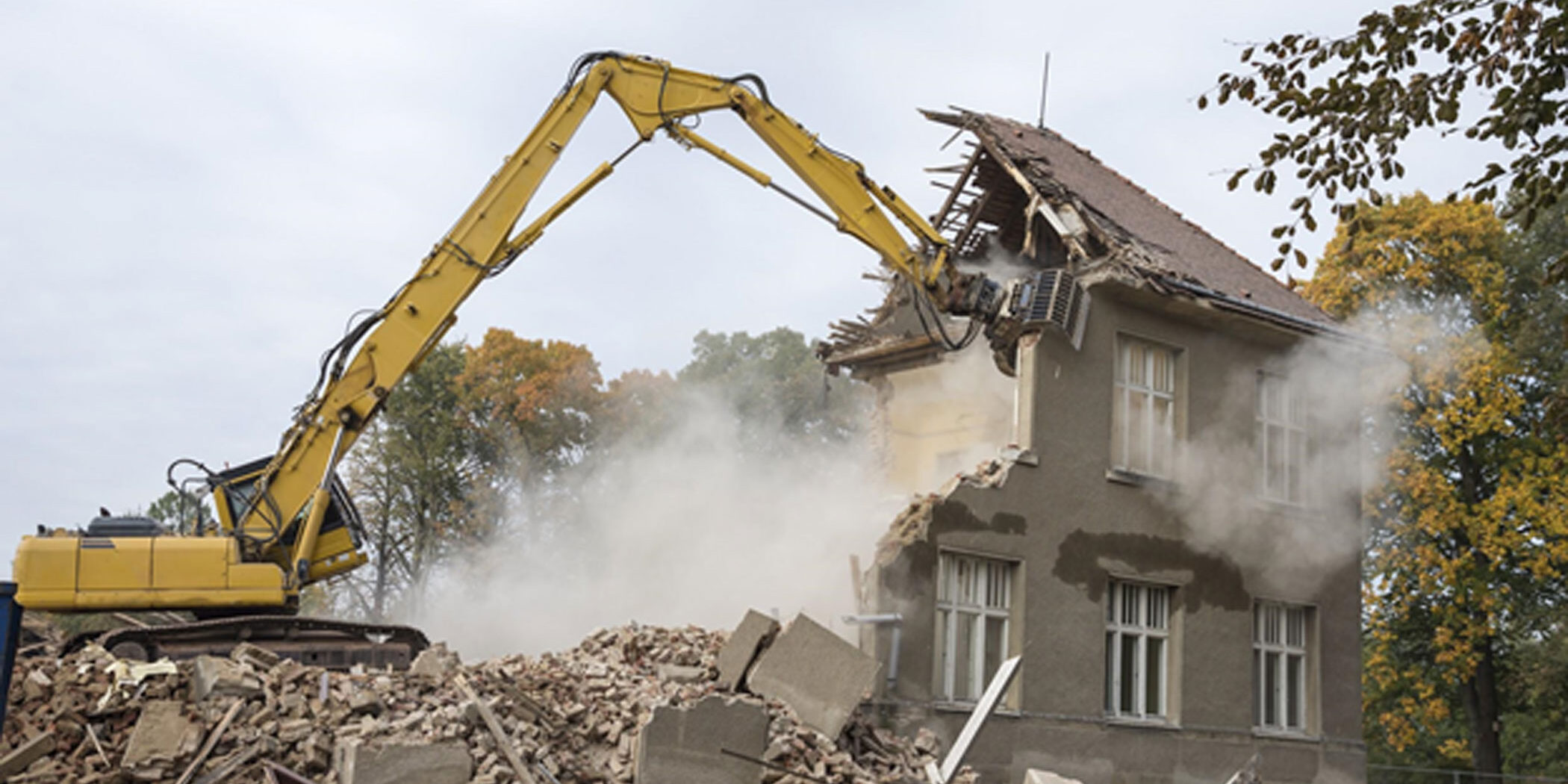When you really get down to it, construction demolition is a simple and straightforward process, but it sure doesn’t seem that way to a novice. For someone completely new to this, it might feel like banging your head against a brick wall, which is why we’ve broken it down into a series of simple steps for you to follow.
Choose Your Method
There’s more than one way to skin a cat, as they say. In the case of building demolition, there are three different ways to go about it, and there are pros and cons for each.
1. Mechanical Demolition
This is the cheaper of the two methods. On average, it costs between $4,000 and $14,000, and it uses hydraulic excavators and other heavy machinery. Once the demolishing bit is over, a trailer or dumpster is used to clear away the debris. If you are on a tight budget, this may be the way to go.
2. Deconstruction
This one costs about 2 or 3 times more than demolition, but what you spend on deconstructing you can save on building material. Deconstruction lets you salvage about 70% of the lumber, beams, windows, and doors from your old house, which can be reused in the construction of the new one.
This method is also more time-consuming, but it’s much better for the environment. The deconstruction crew can save light fixtures, bathroom sinks and toilets, copper pipes, glass, and even nails. How much you salvage depends on your own creativity and what new, unique ways you can think of reusing whatever you save.
3. A Great Combination
A win-win situation can be to combine the two. This will mean the whole process will be efficient and cost-effective. The deconstruction crew will go through the house first and thoroughly examine the entire space to identify what can be reused and salvaged. All the reusable things can be removed and hauled away.
Once that’s done, the construction demolition crew can come in. The leftover debris can then be disposed of. This is the environmentally responsible way, while also saving you money and time.
Deciding on the Right Team
The next step is to choose the demolition company right for you. Do your research and talk to several demolition contractors before deciding on one. They will visit the site and go over the plan with you. They will also be able to give you suggestions and ideas.
Ask each company for estimates and compare them for the best quote. Get the estimates in writing with a breakdown of the costs. The estimate should also include who will be responsible for getting and paying for any required permits.
Inspecting the House
Read up on your state’s laws or consult your demolition contractors. Most states require houses to undergo an inspection for things like:
- Asbestos
- Lead Paint
- Mold
- Rotted Wood
Your chosen contractor would either conduct the inspection themselves or subcontract it out to another company. If any of these hazardous materials are found in your house, there are certain remediation procedures to be followed before you can go ahead with the demolition.
Acquiring Permits
Every state has different laws and permit requirements for demolitions. Your demolition contractors should know which permits you need and, in most cases, will get the required permits for you. If you need to get the permits yourself, you can usually get most permits from your local City Hall. Check your city’s government website to find which permits you will need. Some states have regulations about
- Noise Pollution
- Demolition Work Hours
- Notifications
- Debris Removal and Disposal
Disconnecting Utilities
Before the demolition contractors start their work, make sure all the utilities are disconnected from the main source. Gas and electricity pose the biggest risk of some sort of combustion or gas inhalation for the crew and everyone working on site. Main pipes could get damaged and result in damage or flooding, not just for you but for the neighbors as well.
- Water
- Sewage
- Gas
- Electricity
Most companies require termination of service notices in writing, so write to them at least two weeks in advance to give them plenty of time before the actual demolition begins.
Preparing the Area (and Neighbors)
Put up a debris fence all around the work area to ensure that debris and other material do not fall into the neighbor’s yard. It would also be a good idea to give the neighbors a heads-up a week or two before the process begins, so they know to be patient with the noise and dust.
Salvaging and Donating
Whatever you cannot reuse in your new construction can be donated to a charity. A lot of charities like Habitat for Humanity accept such donations and would be happy to take this material off of your hands. This is not only good for the environment and an act of charity for the less fortunate, but it is also tax-deductible and a way to save some money.
Demolishing and Cleaning Up
Depending on which form or combination of demolition and deconstruction you chose, this can take anywhere from a day to several days. Once the demolition is done, it’s time to load up the leftover debris and dispose of it per your state laws.
For professional help in demolition and construction, turn to Rock On Walls and Falls! Our experts are up for the task, no matter how challenging. Contact us to get started today.








